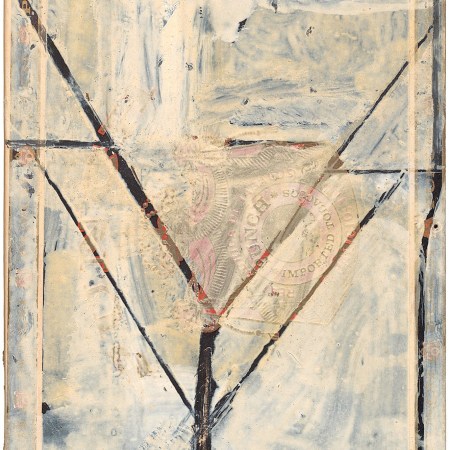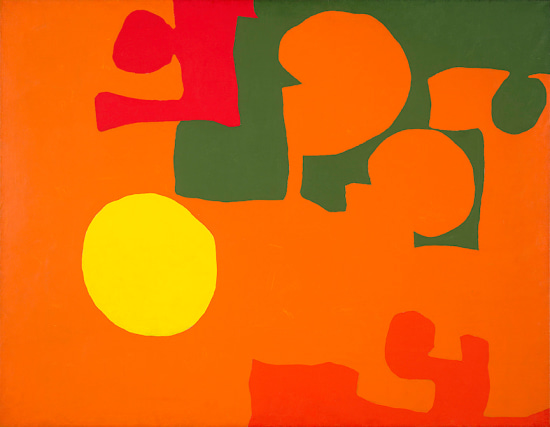
"My pictures became the truly experimental fields of battle...destruction led up to aesthetic tranquility." Antoni Tàpies
Forms of Flight brings some unexpected juxtapositions between works by Lee Bontecou, Richard Diebenkorn, Patrick Heron, Franz Kline, Bob Law, Jules Olitski, Milton Resnick and Antoni Tàpies, amongst other 20th Century artists. Many of the pieces are on exhibit in San Francisco for the first time, and provide aglimpse into how the transformation and manipulation of media provided a way for the artists to transcend beyond the materials at hand.
A raw, texture-laden Antoni Tàpies canvas from 1965, with grains of sand folded into the oil paint, shows Tàpies experimenting with combinations of natural materials and the principles of alchemy to dramatically change the elements used to create the work, as well as our perception of painting. The simultaneous display of earthly robustness and a poetic sensitivity in the Tàpies is echoed in the adjacent Richard Diebenkorn piece Untitled #8 (1983), from his Ocean Park series. Here the translucent layers of paint show Diebenkorn's patient and sensitive acknowledgement of the paper's subtle nature while building a strong, luminous light. The soft, imperfect, free form line around Bob Law's powerfully stark canvas, Castle XXXVII (1976) wanders elegantly around the edge of the work, as if we, like Law, were lying on our backs in a wide open field, drawing and dreaming and staring at the sky. His abstraction is both literal and conceptual, challenging the boundaries of subtlety and our ideas of form.
Forms of Flight provides an opportunity to examine the way these artists manipulated their materials and how that creative process ultimately gave way to a psychological journey, both for the artists and for the viewer. Whether looking at a more literal interpretation of that escape, such as Lee Bontecou's Cruel Bird sculpture from 1957, or a more theoretical example, such as the way Jules Olitski captures atmospheric mists of pure color in Pink Hoodoo (1965), we see these artists searching for ways to transcend the basic physical properties of their media, and in doing so, creating a platform from which we can jump as well.

Patrick Heron
Orange and Green with Lemon Disc: November 1966
28 x 36 inches
oil on canvas
1966